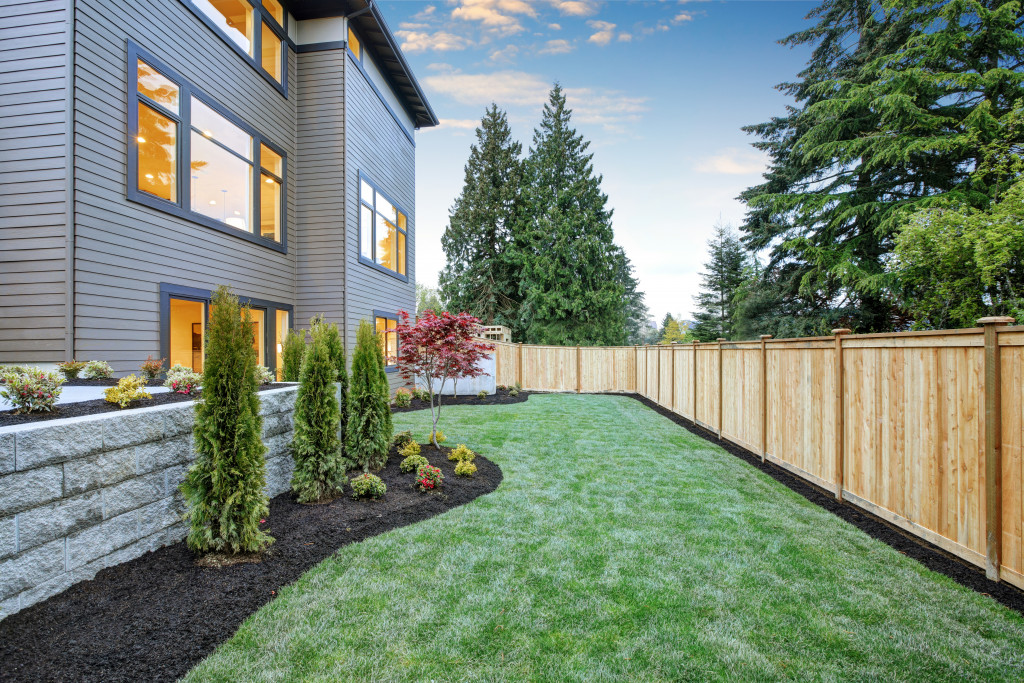Siding does more than contribute to the curb appeal of a property. It insulates a home and protects it from extreme weather conditions. But that doesn’t mean that it’s invincible. Siding can be damaged and compromised. Learning how to repair these issues yourself won’t just mean less cost. This means that if there was anything amiss about your property, specifically your siding, you’d know what to do. Here’s how you can prepare for this project.
Preparation
It’s time to put things aside and gather the tools needed for this home project. Although it’s pretty obvious what you’re going to need, here are some basic yet often overlooked preparations.
Clear Out the Area Both in and Out
From outdoor furniture to your parked car, clear out the surrounding space of the siding’s problem area. This will provide more room for siding removal and installation. This also includes the interior facing side of the wall. The project might shake things off the wall on the other side, resulting in more cleaning up than you anticipated.
Make It a Safe Workspace
Speaking of keeping the space clear of any obstructions and breakable items, you should also keep other family members and pets out of the way for everyone’s safety and an efficient workflow. Additionally, it might also be best to prompt every one of the repairs ahead of time. It can be noisy and messy, and it’d be best for everyone to stay indoors instead.

Commonly Experienced Siding Problems
A Relatively Higher Electric Bill
As mentioned earlier, one of the main functions of siding is to insulate the interior of a house. But when there are cracks, holes, and gaps, energy efficiency will diminish in a home. The same can be said for your windows. That’s why the proper installation of windows is important.
The heating and cooling systems in your home might have to compensate for the energy lost through the cracks in the siding. The last line of protection from cool air or warmth escaping to the outdoors must be well insulated to maximize energy efficiency and avoid higher electric bills.
Fading and Cracking
If you observe how your sidings have faded in color, it’s most likely because of the sun. The sun can bleach things, especially when the object is left under its exposure for a long time. Considering that sidings are on the exterior side of a structure, it’s natural to expect that in time, the paint will fade. Fortunately, it’s nothing a fresh coat of paint can’t fix.
Sidings are not only directly exposed to the sun, though. They’re directly exposed to heavy rains, harsh snow, and other extreme weather conditions. As a means to adapt to the immediate environment, wood tends to contract and expand. Wood can expand when wet and then contract as it dries. However, when sidings are continually exposed to fluctuating weather, this can cause damage such as cracking. But even strong impacts from rocks or tree limbs are enough to cause cracks on the siding. A common way of fixing this problem is to conceal the cracks with caulk or remove the problematic area and replace it with a new piece. Others prefer to remove and replace the whole panel.
Wood Rot
Speaking of fluctuating temperatures, constant exposure to excess moisture is not great for siding either. Getting too much moisture in the tissue of wood is a recipe for wood rot. Any damage from rot and excess moisture from the outside can make its way into the internal parts of the siding. Once this happens, it can continue damage there. In more extreme cases, it can result in structural damage.
Since siding is the first line of defense, it should be protected as much as it can be. Paint and primer can be good enough, but it’s not a holistic and long-term option for preventing wood rot. Consider applying a layer of linseed oil or a sealant such as lacquer. Caulking is also essential as it fills up any gaps and holes on the sidings.
Another thing worth doing is making sure that your gutters are debris-free and functioning efficiently. Gutters are used to channel rainwater into the property’s drainage system, ultimately preventing the water from running down on the sidings.
Siding contributes to a property’s curb appeal in more ways than one, as it insulates and protects a home from harsh weather conditions too. But even with such a huge function as protecting the interior of a home, it is not indestructible. There will be times when it’ll have some cracks, maybe even mold. These are all normal but very avoidable. With regular inspections and maintenance, your siding will last for a long time.

